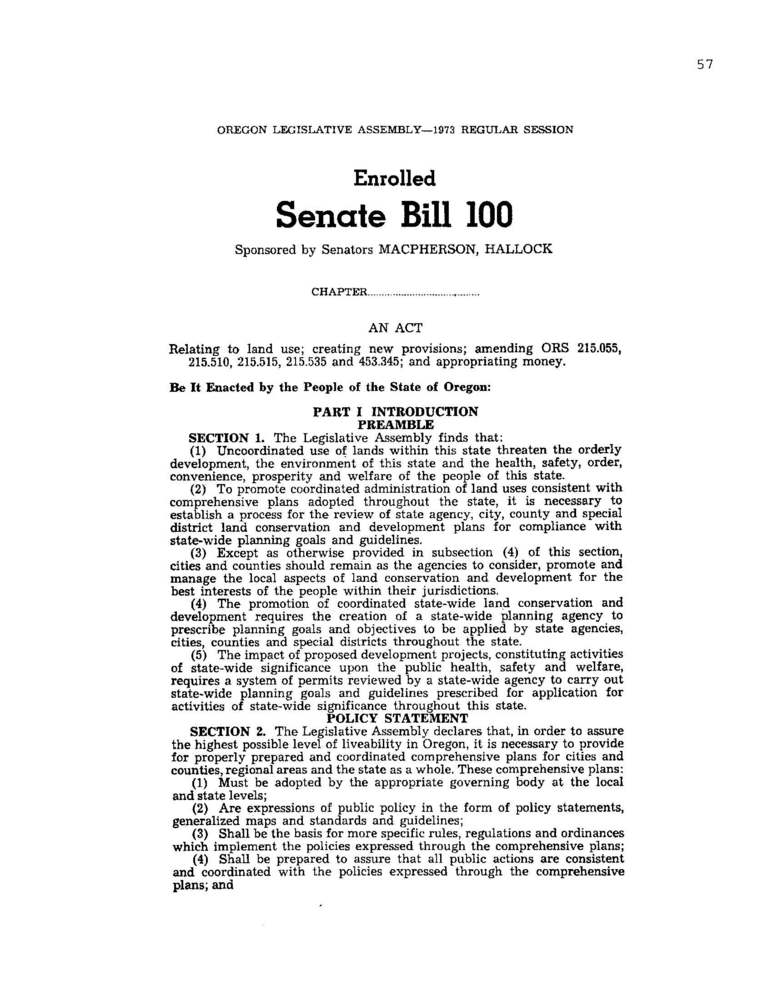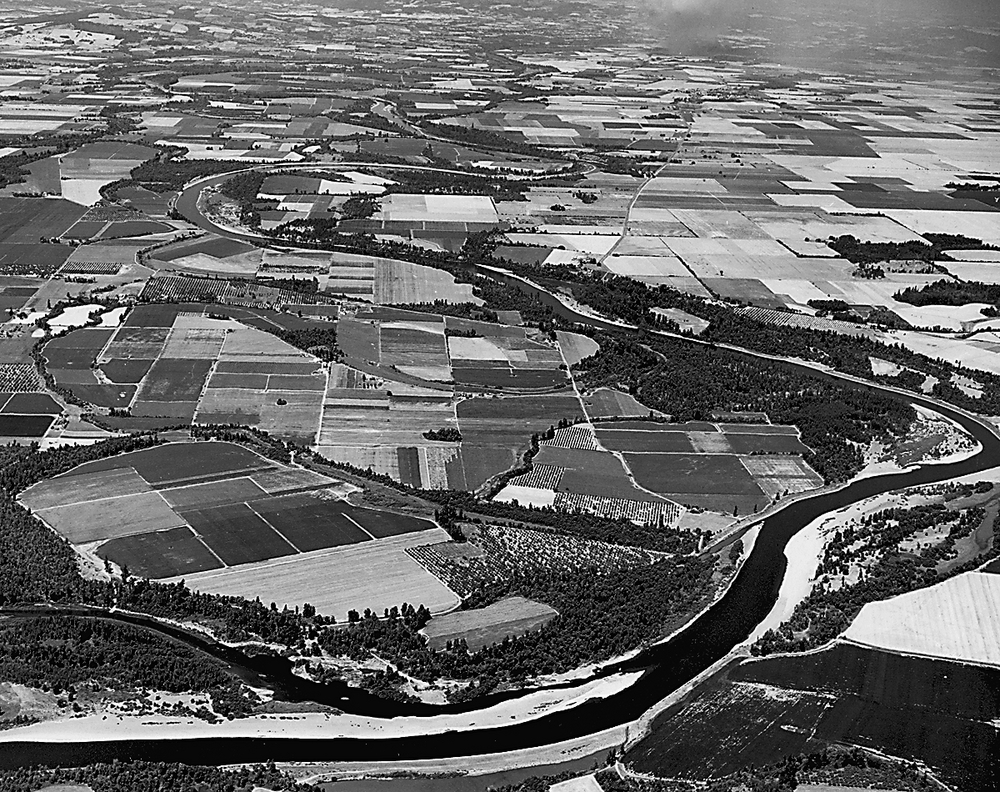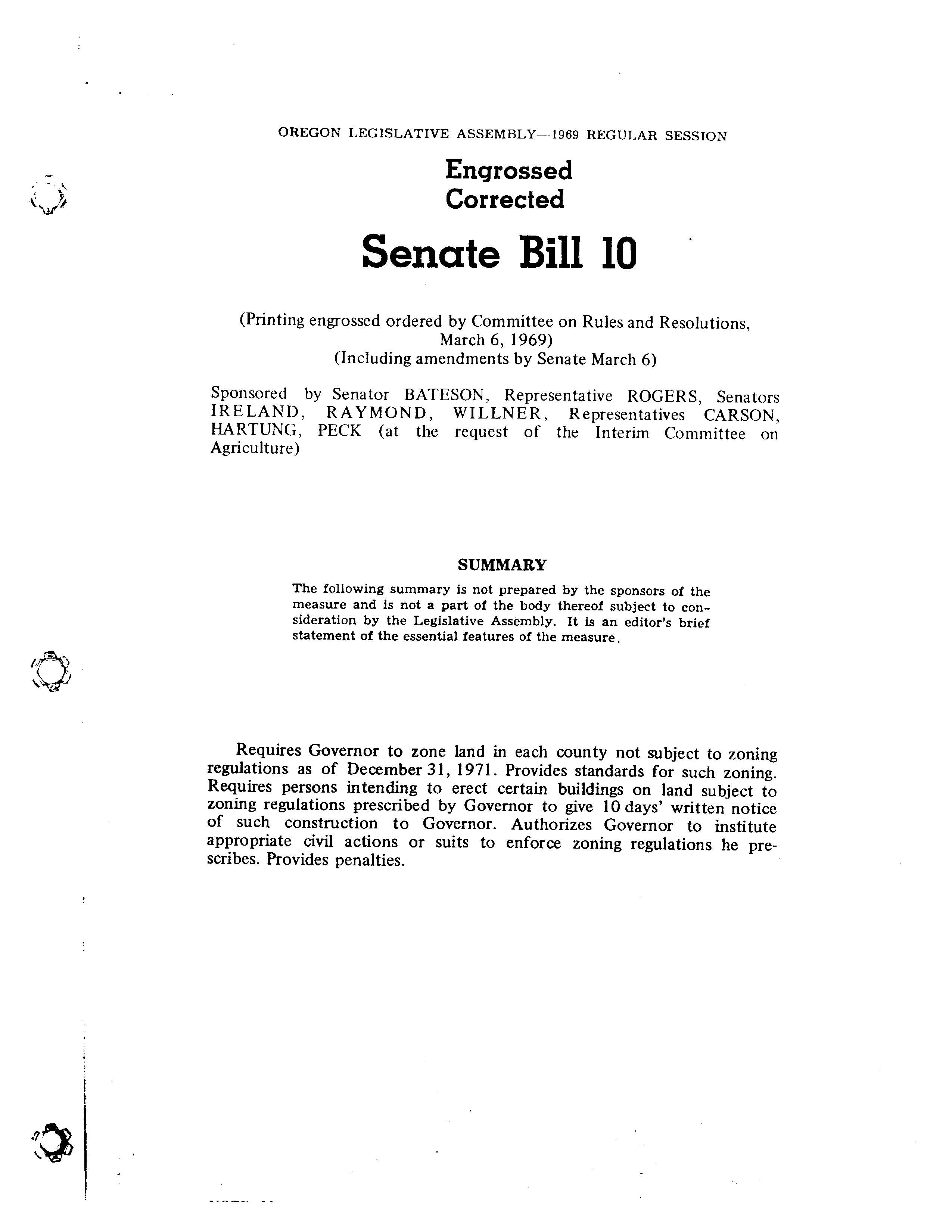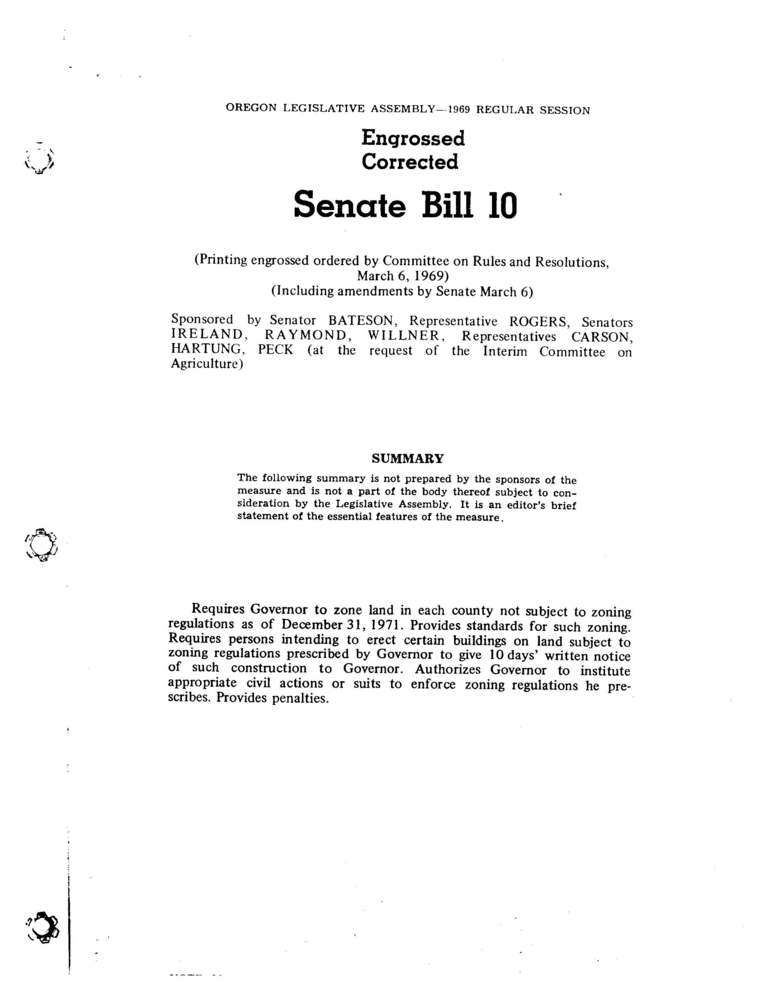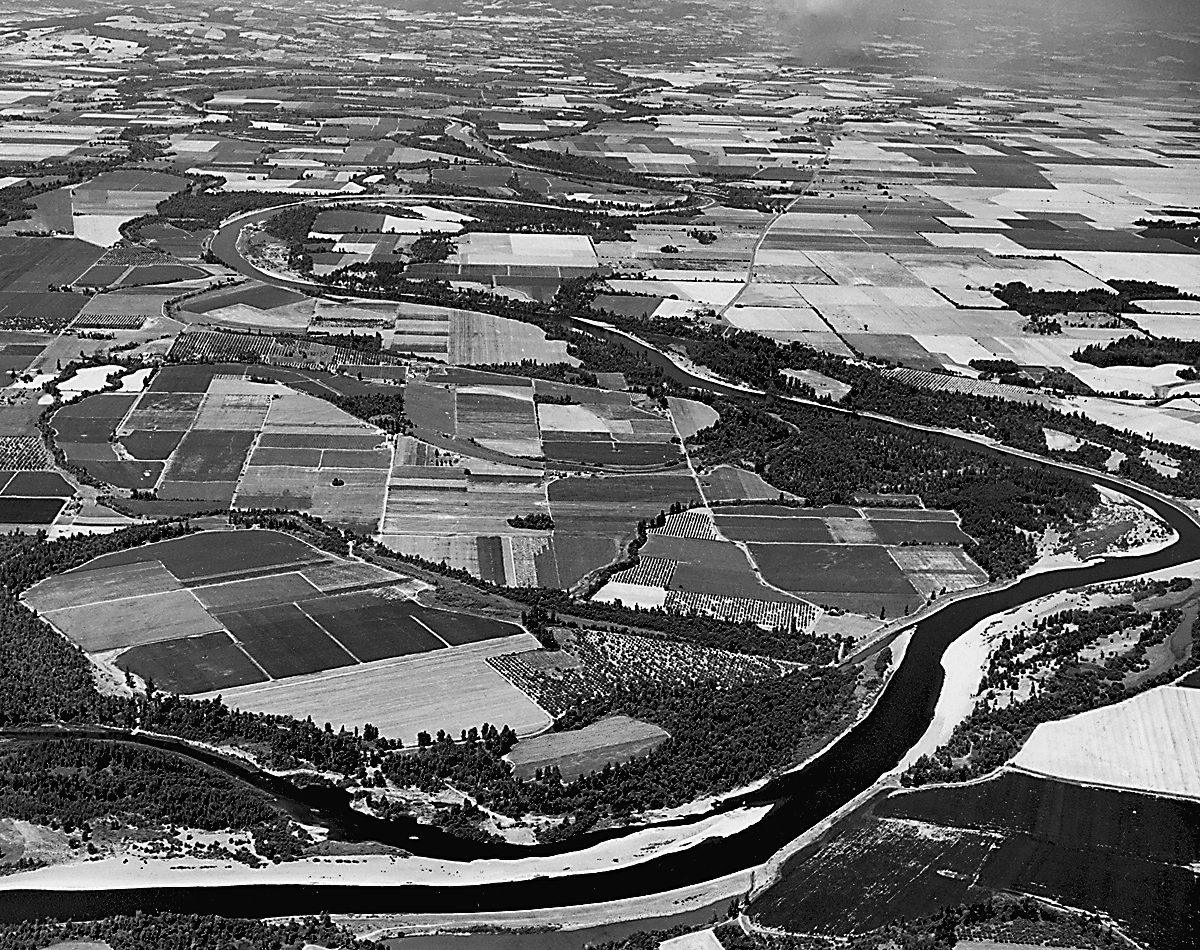In 1973, Oregon Senate Bill 100 established the Land Conservation and Development Commission (LCDC), with policy and administrative oversight of the state-mandated land-use planning program. LCDC executes its responsibilities by developing administrative rules, participating in the judicial process, providing technical assistance, collecting data, and facilitating studies. The commission’s work is supported by the Department of Land Conservation and Development (DLCD).
Seven unpaid citizens, appointed by the governor and confirmed by the Senate, sit on the commission. The members are selected from defined subregions of the state and include elected city and county officials.
LCDC’s initial efforts focused on developing and adopting nineteen statewide goals and guidelines addressing land-use planning, resource protection, and economic development—typical components of local comprehensive plans. The goals embrace coastal issues, which involve coordinating with the federal Coastal Zone Management program, and emphasize concentrating development within urban growth boundaries (UGB) and restricting the development of farm and forest lands. While the goals provide considerable direction, they also include inherent contradictions, such as mandating the protection of aggregate resources (sand and gravel), which has the potential to conflict with farmland preservation.
By 1986, all Oregon cities and counties were in compliance with state goals and had land-use plans in place. The process took longer than anticipated because of difficulties in clarifying policies and resolving conflicts over UGBs, high-density zoning, and rural development.
Once LCDC approves comprehensive plans through a process called "acknowledgement," plans are subject to periodic reviews to ensure that they reflect changing conditions, are coordinated with other comprehensive plans and investments, and are in compliance with state goals, statutes, and rules. State law also requires state agencies to comply with state goals and local plans. To that end, agencies must prepare coordination programs for LCDC certification.
LCDC was initially responsible for hearing appeals of local land-use decisions as part of judicial review. In 1979, the legislature established the Land Use Board of Appeals, a three-member tribunal with expertise in land-use matters and the only land-use court in the nation. The goal was to reduce the time needed to make decisions and to ensure that land-use matters are reviewed by judges with appropriate expertise.
In the years since SB 100 passed, the state's land-use program has been refined in response to political pressures and experiences with implementation. The changes include distinguishing between marginal and highly productive farmlands, adopting rules for guiding development of unincorporated communities and expanding UGBs, and setting goals for reducing vehicle miles traveled to bring attention to the relationship between land use and transportation. In 1995, the legislature established a regional problem-solving process that enables units of government to work together to define issues and identify solutions that can be approved by LCDC, even though they may be contrary to state planning goals and requirements. Additional initiatives include:
• Transportation and Growth Management, a joint effort of DLCD and the Oregon Department of Transportation, offering technical assistance and funding for transportation planning projects
• Coastal Management Program, administered by DLCD’s Ocean and Coastal Services Division, providing financial and planning assistance to local governments
• Transfer of development rights, a pilot program directed toward protecting resources from development
LCDC has weathered three referenda seeking to abolish state oversight of land-use, none of which passed. The more serious challenge was mounted by property rights activists who in 2004 secured passage of Measure 37, which allows property owners to claim compensation for losses in values due to changes in environmental and land-use regulations. Alternatively, owners can use their property in accordance with regulations in place at the time of purchase.
Support for property rights did not mean a rejection of land-use planning. A 2005 survey of Oregonians found that 69 percent believed that growth management made the state a more desirable place to live. In the aftermath of Measure 37, thousands of claims were filed involving huge developments on protected farm and forest lands. In response, the 2007 legislature referred Measure 49 to voters, establishing more limited development rights; the measure passed with 62 percent of the vote.
LCDC has developed an enduring record of innovation that establishes Oregon as a leader in land-use planning. The efforts to improve are ongoing, with the "Big Look" Task Force report to the 2009 legislature calling for more flexibility, coordination, regional cooperation, and simplicity. The legislature made only limited changes, to the frustration of some and the conclusion of others that the Oregon land-use system is working relatively well.
-
![]()
First page of Senate Bill 100.
Courtesy Oregon State Archives
Related Entries
-
Land Use Planning
In 1973, Oregon took a pioneering step in land use planning. Signed int…
-
![Senate Bill 10]()
Senate Bill 10
The enactment of Senate Bill 10 in 1969 was a crucial step on the path …
-
![Senate Bill 100]()
Senate Bill 100
Signed into law on May 29, 1973, Oregon Senate Bill 100 created an inst…
-
Urban Growth Boundary
Each urban area in Oregon is required to define an Urban Growth Boundar…
Map This on the Oregon History WayFinder
The Oregon History Wayfinder is an interactive map that identifies significant places, people, and events in Oregon history.
Further Reading
Abbott, Carl, Deborah Howe, and Sy Adler, eds.. Planning the Oregon Way: A Twenty-year Evaluation. Corvallis: Oregon State University, 1994.
Abbott, Carl, and Deborah Howe. "The Politics of Land-use Law in Oregon: Senate Bill 100, Twenty Years Later." Oregon Historical Quarterly 94:1 (1993), 5-35.
Howe, Deborah, Carl Abbott, and Sy Adler. "What’s on the Horizon for Oregon Planners?" Journal of the American Planning Association 70:4 (2004), 391-397.

